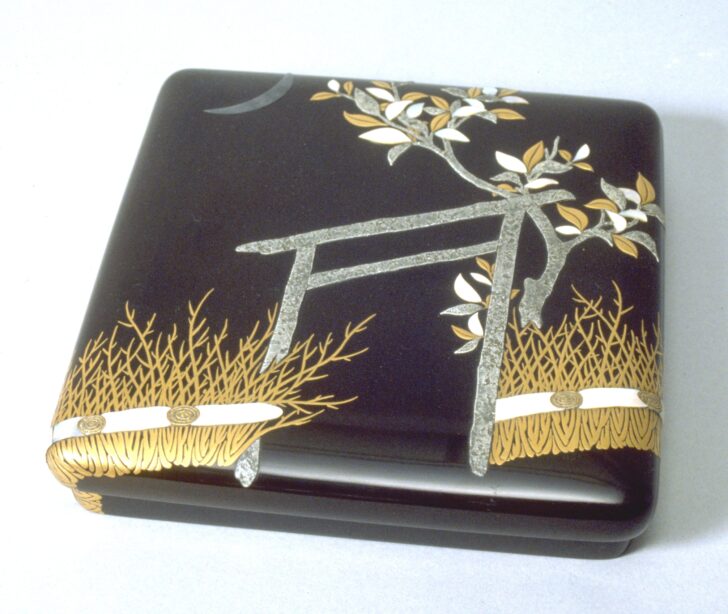Writing Box (Suzuri-bako)
Ogata Kōrin

Description
Gallery Rotations Fall 2012
Ogata Kôrin
Japan, 1658–1716
Writing box (Suzuri-bako)
Edo period (1615–1868)
1661–1716
Black lacquered wood with gold, abalone shells, silver, and corroded lead strips
Gift of the Baroness Maud Ledyard
von Ketteler, 1942.7
This elegant writing box, which originally came with a paperknife, a water-dropper, and a stone for grinding the ink, was made at the pinnacle of Japan’s production of lacquer ware. Against a black background, poetic motifs are formed out of abalone shells, gold, silver, and corroded lead. In this autumnal scene, the lone gate, moon, tree, and thatched fence create a rustic feeling. The interior of the box, however, is lavishly decorated with wild autumn flowers (Patrinia scabiosaefoliais) using the laborious maki-e (“sprinkled picture”) technique. This playful contrast is one of the characteristics of decorative art made during the Edo period.
The design of this box is attributed to Ogata Kôrin, who with his younger brother Kenzan (1663–1743) revived a painting style originated a half-century earlier by Tawaraya Sôtatsu (died circa 1643) and Hon’ami Kôetsu (1558–1637). The two brothers grew up in a wealthy merchant family in Kyoto, honing their artistic sensibilities in a circle of elite cultural connoisseurs that included their father. Their painting style, later named the Rimpa School,
is known for its sophisticated designs and ostentatious use of gold, silver, and colors.
Subject Matter:
An autumnal scene of a lone gate with tree, thatched fence and the moon. Interior of the box is decorated with wild autumn flowers done using the laborious maki-e technique.
Physical Description:
An elegant writing box, which originally came with a paperknife, a water-dropper, and a stone for grinding the ink. Black laquer with poetic motifs formed out of abalone shells, gold, silver and corroded lead.
Usage Rights:
If you are interested in using an image for a publication, please visit https://umma.umich.edu/request-image/ for more information and to fill out the online Image Rights and Reproductions Request Form.